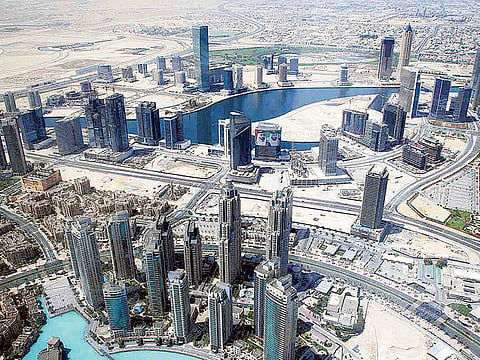UAE to build post COVID-19 economy on digital, announces two-phase recovery plan
COVID-19 created a situation where governments need to play 'more active role'

Dubai: The UAE has given the first indication of how it plans to shape the economy in a post-COVID-19 world - Go Big on Digital.
This will mean a “more active role for governments in the national economy”.
“The next phase will see a long-term stimulus plan to speed up recovery… and encourage investments in digital economy,” said Sultan Al Mansoori, UAE Economy Minister, in a statement issued by WAM.
And this digital economy would be built around 5G - the latest telecom infrastructure and in which local telecom have already committed significant investments into the rollout.
This will represent the second phase of the recovery plan - the first phase targets the private sector with incentives totalling Dh282.5 billion so far. Details are awaited on how these funds will be deployed.
These funds will come in handy for the “gradual opening” of the economy and businesses while “adhering to precautionary measures”.
The Dh282.5 billion will go to sectors most directly affected by the pandemic, as well as support SMEs. The funds will find their way to “beneficiaries through effective schemes and plans”, the statement added.
The sectors hardest hit by the virus outbreak include tourism, aviation, petrochemicals, retail and real estate. But there have been a few that have gained in prominence as well - those such as “technology, internet services, digital entertainment, e-commerce and food business”.
Market sources say that the government is handpicking the high priority sectors where it needs to commit significant investments for the future. “If real estate and infrastructure was the solution to emerge from the 2008 financial crisis, this time it’s investing in the digital economy and its infrastructure,” said a banker.
“Clearly, what the UAE committed into its digital and telecom networks has paid off during the pandemic lockdown. The future is about building on that.”
Scripting a digital future
The second phase of recovery will see a “long-term stimulus package” being injected into the economy, and which would help “accelerate recovery, advance growth [and] transform challenges into opportunities”.
It would also be marked by encouragement for investment in sectors with high potential, “most notably digital economy”. Apart from 5G networks, smart cities and blockchain will feature in the digital push.
Economic trends for post-COVID-19 era will give rise to a new global supply chain and new business patterns

The “green economy” is another priority area for the post-COVID-19 world, and which will see support for industries such as renewable energy and electric cars, and circular economy. A third focus area will be food security by adopting advances in “Artificial Intelligence, biotechnology and genetic engineering”.
So far, individual emirates have come up with their own relief and stimulus programmes, while the UAE Central Bank went in for a two-part package totalling $70 billion. In addition, individual entities, such as Emirates airline, is in for funding support from its key shareholder Dubai. Other government-owned enterprises too could be headed the same way.
“We call on the private sector to prepare for the digital economy phase that will drive the recovery, nurture future employment skills, shift towards integrating technology at every stage of production to ensure business continuity and growth in the future,” said Al Mansoori.
“The UAE economy has strong fundamentals that enhance its ability to overcome crises and achieve leadership.”
The UAE revival strategy for the economy will be built on
* A gradual opening of the economy and businesses, while adhering to the precautionary measures and providing stimulus plans; * A long-term stimulus plan to accelerate recovery and advance growth; * Encouraging national industries, ensuring the provision of necessities, and exploring diversification of industrial imports; and * The current crisis has demonstrated the close relationship between the life sustainability and technological capabilities of nations.
Sign up for the Daily Briefing
Get the latest news and updates straight to your inbox







